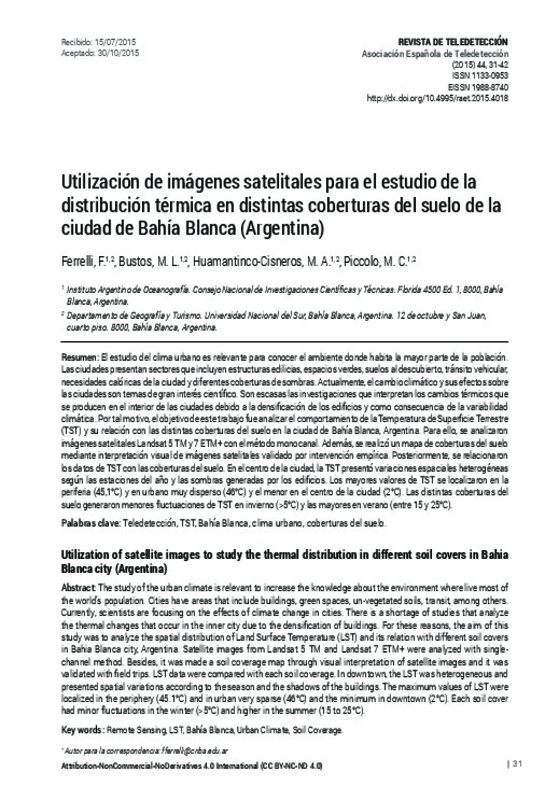JavaScript is disabled for your browser. Some features of this site may not work without it.
Buscar en RiuNet
Listar
Mi cuenta
Estadísticas
Ayuda RiuNet
Admin. UPV
Desde el lunes 3 y hasta el jueves 20 de marzo, RiuNet funcionará en modo de solo lectura a causa de su actualización a una nueva versión.
Utilization of satellite images to study the thermal distribution in different soil covers in Bahia Blanca city (Argentina)
Mostrar el registro completo del ítem
Ferrelli, F.; Bustos, ML.; Huamantinco-Cisneros, MA.; Piccolo, MC. (2015). Utilization of satellite images to study the thermal distribution in different soil covers in Bahia Blanca city (Argentina). Revista de Teledetección. (44):31-42. https://doi.org/10.4995/raet.2015.4018
Por favor, use este identificador para citar o enlazar este ítem: http://hdl.handle.net/10251/80556
Ficheros en el ítem
Metadatos del ítem
| Título: | Utilization of satellite images to study the thermal distribution in different soil covers in Bahia Blanca city (Argentina) | |
| Otro titulo: |
|
|
| Autor: | Ferrelli, F. Bustos, M. L. Huamantinco-Cisneros, M. A. Piccolo, M. C. | |
| Fecha difusión: |
|
|
| Resumen: |
[EN] The study of the urban climate is relevant to increase the knowledge about the environment where live most of the world’s population. Cities have areas that include buildings, green spaces, un-vegetated soils, transit, ...[+]
[ES] El estudio del clima urbano es relevante para conocer el ambiente donde habita la mayor parte de la población. Las ciudades presentan sectores que incluyen estructuras edilicias, espacios verdes, suelos al descubierto, ...[+]
|
|
| Palabras clave: |
|
|
| Derechos de uso: | Reconocimiento - No comercial - Sin obra derivada (by-nc-nd) | |
| Fuente: |
|
|
| DOI: |
|
|
| Editorial: |
|
|
| Versión del editor: | https://doi.org/10.4995/raet.2015.4018 | |
| Descripción: |
|
|
| Agradecimientos: |
Los autores desean agradecer al United Stated Geological Survey (USGS) por brindar la información satelital. Al Servicio Meteorológico Nacional (SMN), al Centro de Recursos Renovables de la Zona Semiárida (CERZOS) por los ...[+]
|
|
| Tipo: |
|








